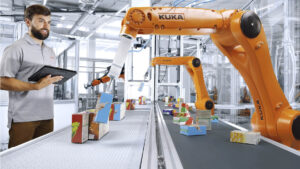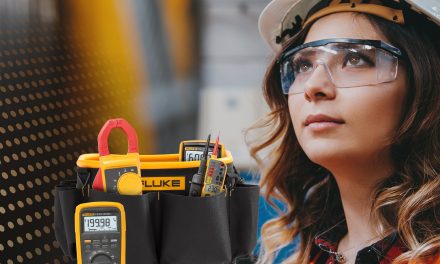Process optimisation lends itself to efficient production methods that are integral within today’s F&B manufacturing sector.

Robot process automation within intensive industries such as F&B is delivering returns across several areas, including; throughput, application repeatability, and consistency of task execution. Though maximising facility footprints, especially so for those with established facilities that cannot accommodate a significant change, is a challenge. In the case of new operational facilities and greenfield sites designed to be fully connected, smart factory environments, the choices can be unlimited, in terms of the robotic system that can be utilised. i.e. what solutions are on offer to those facilities where space constraints might exist, but for whom speed of execution is also a consideration?
The COVID-19 pandemic continues to put undue strain upon supply chains. Increased demand coupled with labour strains means manufacturers are now having to evaluate the benefits attributed to robotics sooner, as a tactical survival move, rather than a strategic incentive, to ensure operational longevity. Social distancing measures mean that where once operators stood shoulder to shoulder along a production line, alternative means of task execution are having to be sourced. In many cases, the introduction of robotics.
These adjustments are necessary to satisfy demand within the supply chain, driven by the explosion of e-commerce, and can be made relatively easily and with little disruption or downtime. But first and foremost, manufacturers must identify where automated solutions can best add value, rather than automating for the sake of automating. Process-focused improvements aimed at improving efficiency in areas that might once have been heavily reliant upon manual handling is just one area that can benefit. Consider picking and packing within a food processing/packaging facility where once operators worked alongside one another. Replacing these time consuming and often low-value tasks with robotics enables manufacturers to position operators within other areas of the business, where skills can be better applied, delivering value back into the process chain.
Not only can robots execute the tasks of several people owing to their ability to operate continuously, but they also require a reduced footprint, which at the same time affords manufacturers a level of dynamicity to how they can be implemented. Robots can be floor mounted, wall-mounted, ceiling-mounted or on a track, expanding upon its application deliverables. Robots don’t need to move around and there are no H&S considerations should a robot be utilised within an area that incorporates other machinery. Often compact, robotic cells demand smaller operational footprints but increase productivity. Often is the case SME’s or those manufacturers who might not have had any exposure to robotics historically may dismiss robot process automation as ‘we don’t have space for a robot’ when in reality, they need less space than operators.
Making the most efficient use of existing facilities is imperative. The F&B sector is vast and fast-moving. Tastes and market trends change regularly and the ability to keep pace with these is essential. The chances are that for every manufacturer not yet utilising robot process automation as an integral part of their process chain, their competitors are, and already feeling the long-lasting benefits, such as cost savings achieved through operational optimisation, that are then passed back to the customer.
And, competition doesn’t just exist locally. International challenges also present themselves. The UK has been using robot automation at a lesser rate than its global competitors, yet the UK F&B industry is highly varied, offering a huge amount of potential for automation. The depletion of skilled labour pools is making it extremely difficult for manufacturers to source, train and retain new staff. As such, a focus upon upskilling existing labour is key. Those operators that might be involved in non-ergonomic, repetitive tasks, or low value, high volume tasks, can be retrained as robot programmers. Training provides companies and their employee’s opportunities to upskill, or reskill, in technologies that are relevant to industry by way of practically orientated ‘hands-on experience’ training with state-of-the-art equipment, delivered by robot professionals, such as KUKA.
Those robotic tools that are available, are as diverse as the applications in which they are to be utilised: measuring, weighing, picking & placing, packing & palletising, the handling of hot or cold ingredients, operation within very hot or very cold environments, high volume repetitive tasks, tasks that require a consistent level of accuracy, handling heavy items or a diverse range of items.
Optimizing a manufacturing facility footprint and operational efficiencies can provide immediate and long-lasting benefits by maximizing throughput and reducing operating costs. Even in these uncertain times, the potential of robot process automation has to be evaluated.


